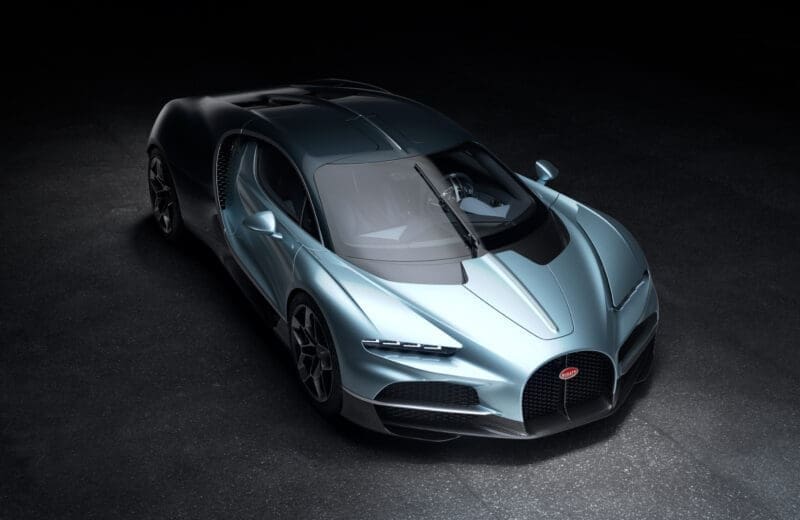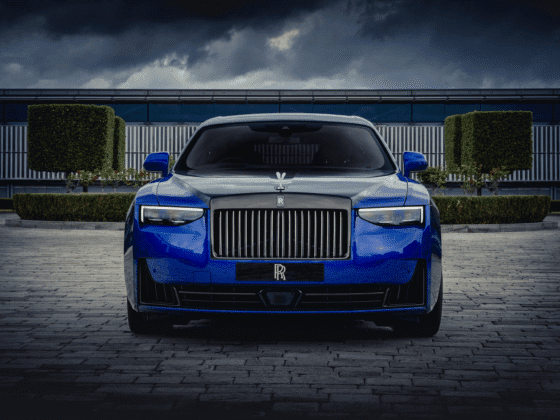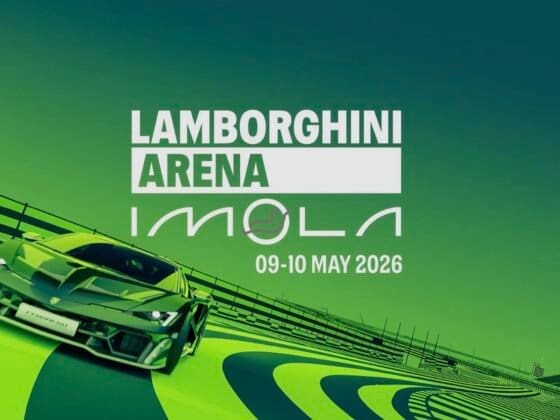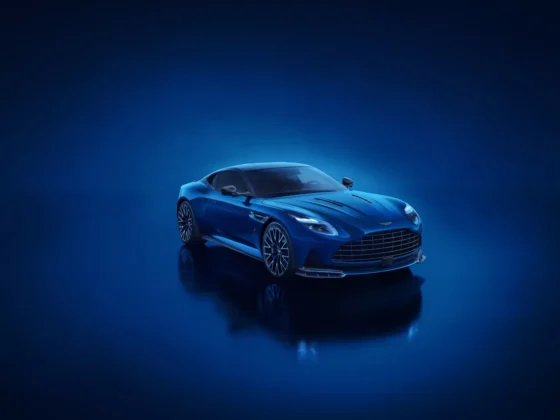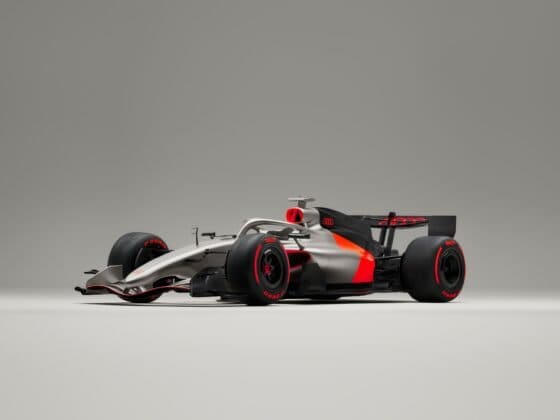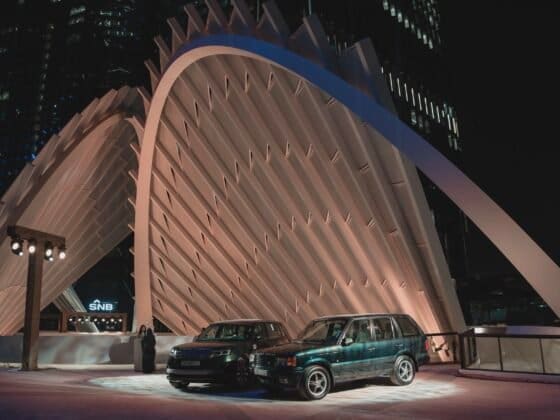Bugatti’s latest masterpiece, the Tourbillon, goes far beyond performance benchmarks—it exemplifies a revolution in automotive packaging. Introduced in the newest episode of the Bugatti: A New Era documentary series, the Tourbillon showcases how design, innovation, and holistic engineering coalesce into an integrated form that sets a new standard in the hypercar segment. This is not simply a car—it is a philosophy made tangible through engineering precision and design intent.
At the heart of the Tourbillon lies a dramatically reimagined powertrain. Ditching the iconic W16 for an all-new V16 engine, Bugatti has reoriented the motor at an angle—longer and narrower—to create more space for critical aerodynamic elements. This pivotal shift enables the integration of Venturi tunnels that begin beneath the cabin and stretch nearly halfway across the car’s body. These tunnels produce exceptional downforce without relying on large aerodynamic wings, making the Tourbillon sleeker, faster, and more efficient.
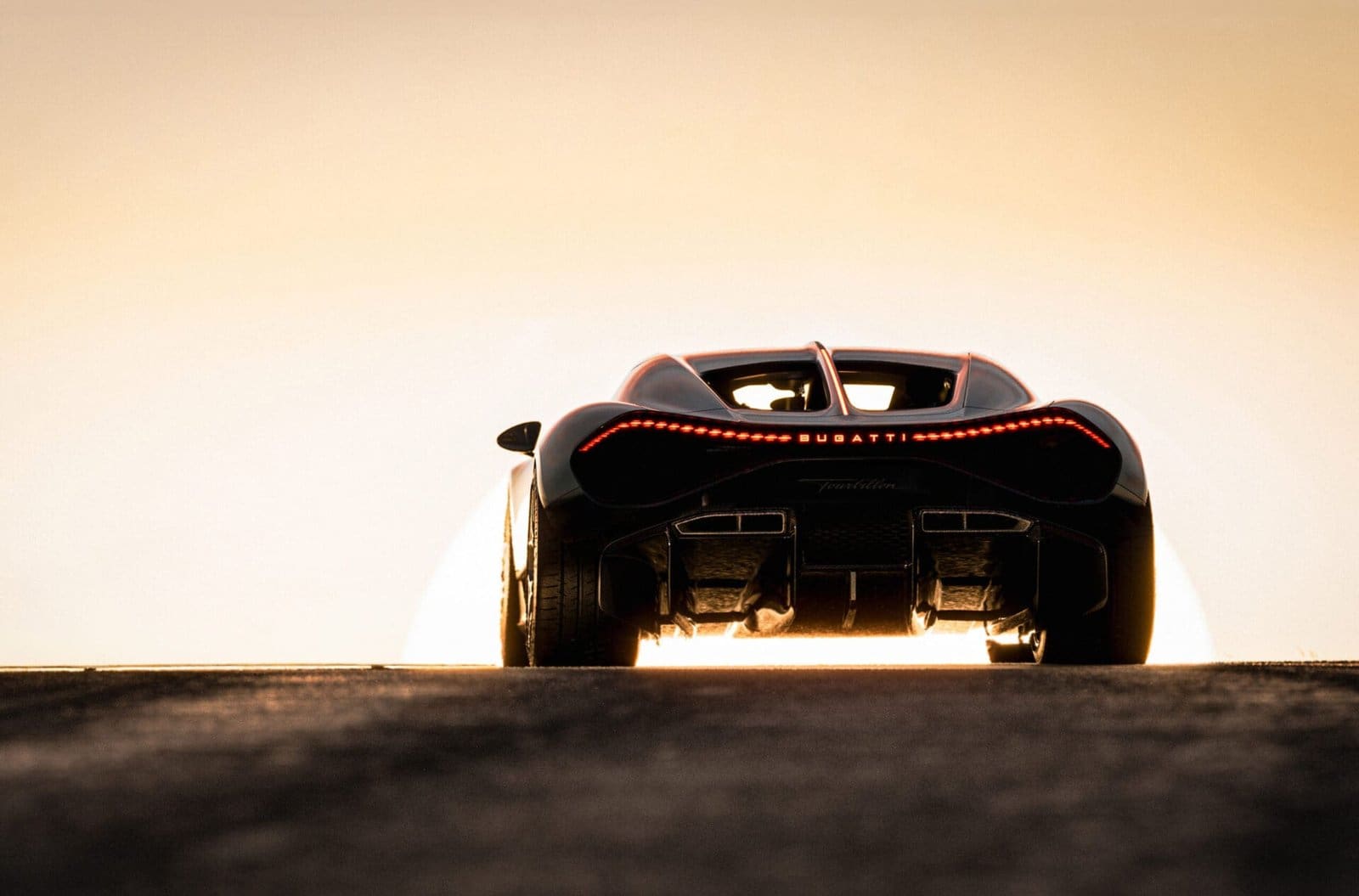
The packaging concept extends to the gearbox and drivetrain as well. For the first time, the gearbox is located behind the combustion engine. The front axle is driven independently by dual electric motors, completely decoupled from the rear powertrain. Sandwiched between them is a compact battery that enables perfect weight balance and efficient energy management. This bold rearrangement of conventional architecture is a deliberate choice, engineered for performance and driven by the pursuit of aerodynamic purity.
This design also plays a major role in reducing frontal area—a crucial aspect of performance at hyper speeds. As Mate Rimac, CEO of Bugatti Rimac, explains, total dynamic resistance is a function of both drag coefficient and frontal area. Reducing the latter was key in ensuring that the Tourbillon could outperform the Chiron, its legendary predecessor. By minimizing frontal mass and eliminating extraneous components, Bugatti achieves a leap in speed potential and energy efficiency.
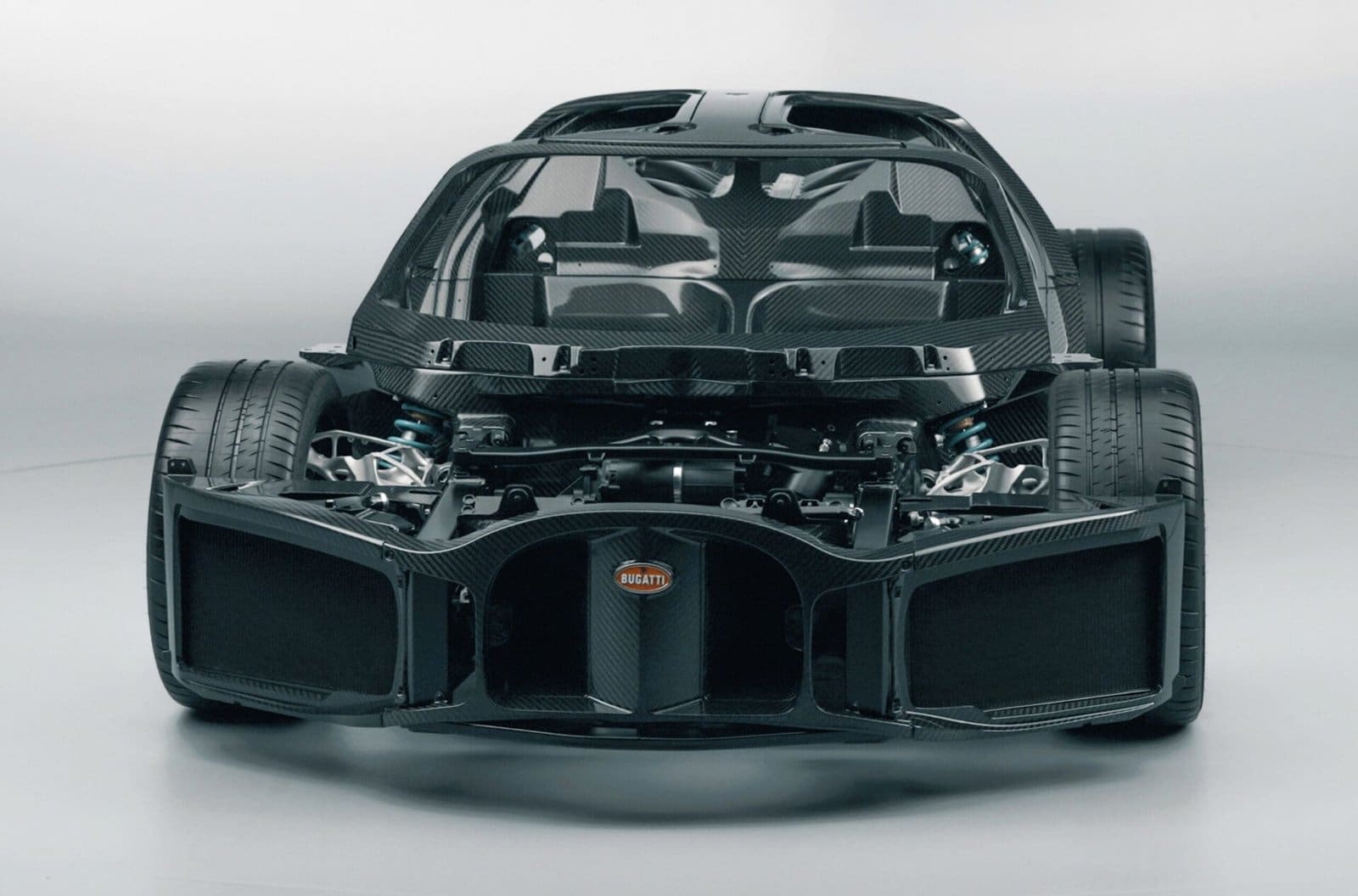
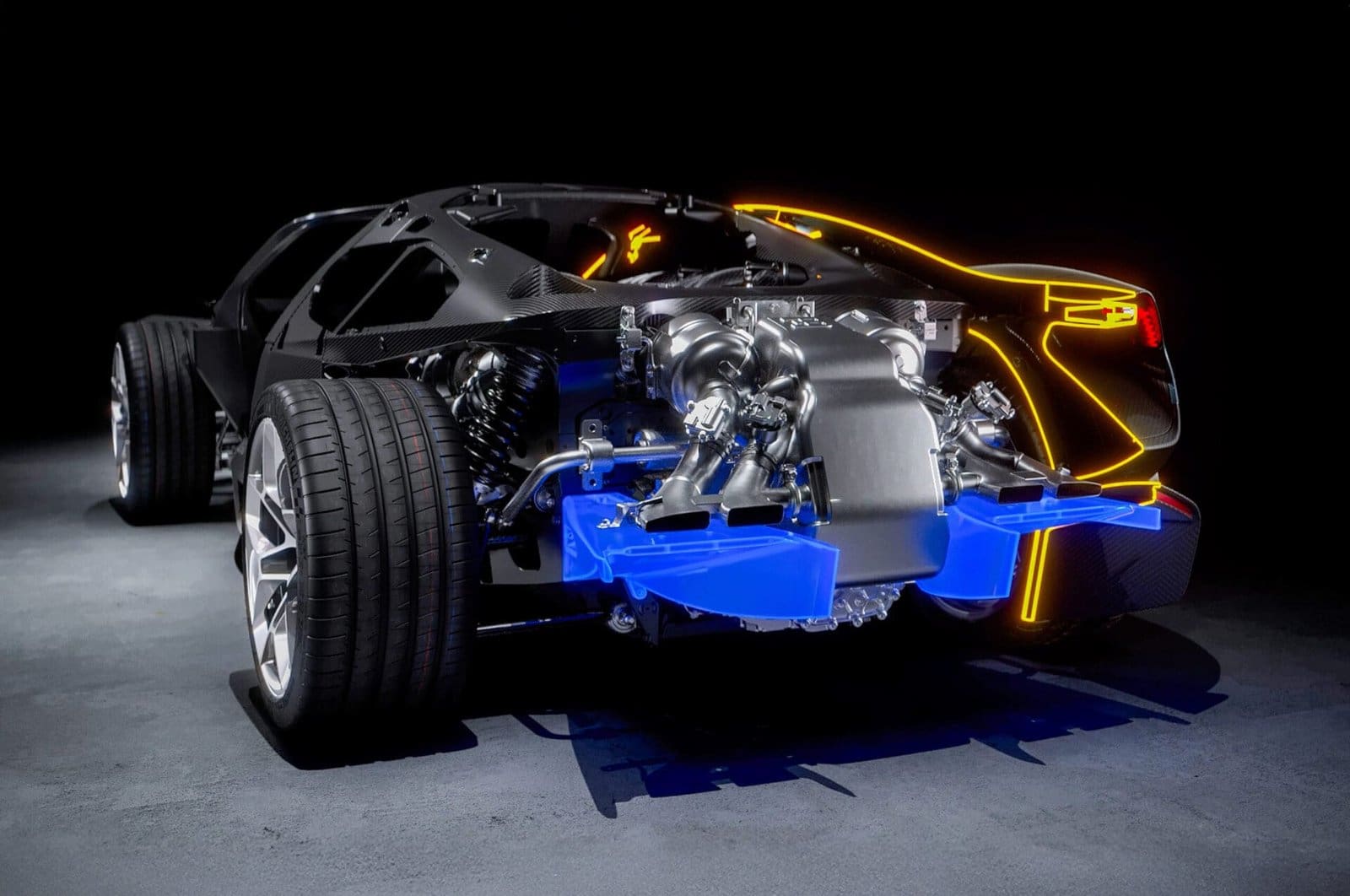

Aerodynamic intelligence runs through the very bones of the Tourbillon. The front of the car, dominated by the brand’s iconic horseshoe grille, is not merely aesthetic—it’s an active cooling interface. Airflow is meticulously channeled from the grille to key mechanical elements: the front electric axle, battery, and brake systems. Additional side intakes service the V16 combustion engine. Even the luggage compartment is designed to contribute to airflow management.
Innovation continues to the rear, where traditional crash beams are replaced by 3D-printed metal components that double as structural diffusers. These futuristic designs absorb crash energy while also enhancing aerodynamic flow. The Tourbillon’s suspension system follows a similar logic. Airfoil-shaped components, optimized through AI and topological modeling, minimize drag while preserving strength. Material is removed atom by atom to retain only what’s necessary—no more, no less.
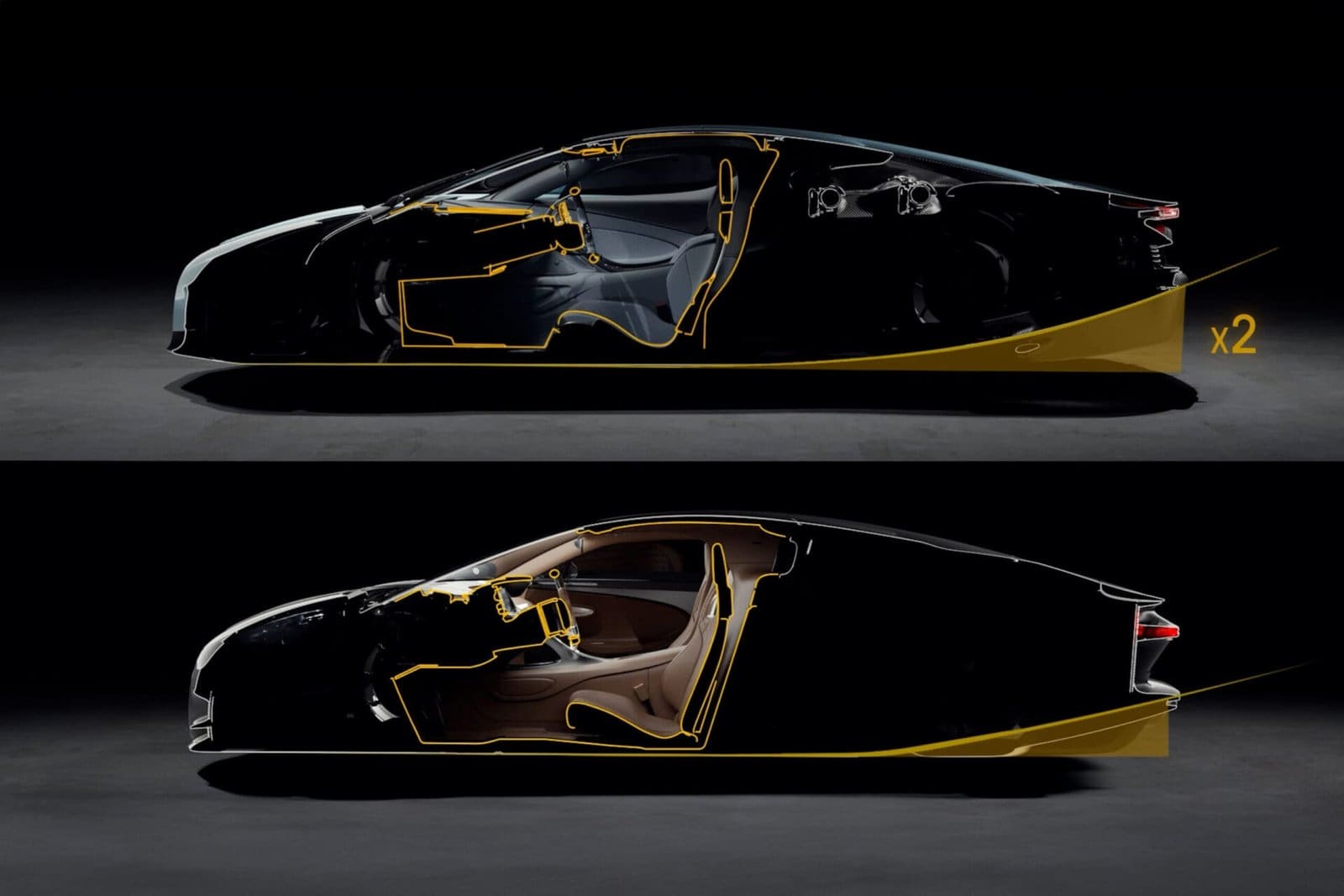
The Tourbillon is a culmination of Bugatti’s core philosophy: nothing is arbitrary. Every decision, from the angle of the engine to the layout of the battery, is made in service of performance, balance, and unity. As Mate Rimac articulates, it’s about synergy—how every part contributes to the whole. In doing so, Bugatti has not only redefined what a hypercar can be but has also challenged the automotive industry to imagine more, think deeper, and innovate smarter. The Bugatti Tourbillon isn’t just a machine—it’s a statement.

